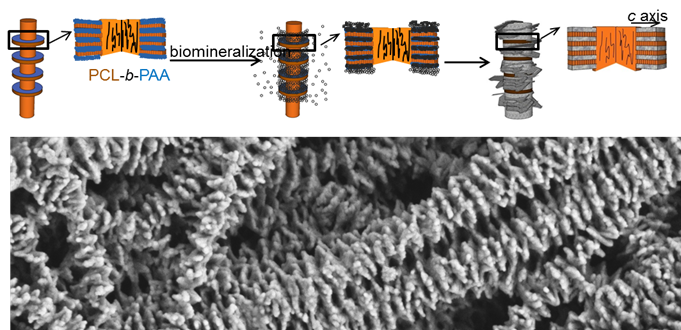
Periodic anionic nanodomains created by block copolymer self-assembly along nanofibers can precisely control orientation and spatial distribution of mineral nanocrystals. It provides a new route to achieving exquisite nanoscale structural control in biomimetic hybrids.
An article by Professor Christopher Li and members of his Soft Materials Lab describes their discovery of a new structural design that is the first of its kind to mimic natural bone nanostructure by combining self-assembly of ionic block copolymers and one-dimensional (1D) polymer crystallization.
Bone is a natural material with exceptional load-bearing properties and the orientation and spatial distribution of nanocrystals in the organic matrix are two distinctive structural characteristics associated with natural bone. Since the 1980s, researchers have sought to create synthetic alternatives possessing these structural characteristics to be able to replace bone autographs in the treatment of diseases associated with bone defects. Until now, despite extensive research efforts, no synthetic template could induce biomineral growth with controlled mineral orientation and spatial distribution that mimics natural bone. Li and his team demonstrate, for the first time, that orientation and spatial distribution of the mineral nanocrystals can be precisely controlled on the nanoscale by employing block copolymer self-assembly and 1D polymer nucleation processes. It is anticipated this approach will provide a new route for biomimetic design of this type of material in general, and bone mimics in particular.
“Mimicking Bone Nanostructure by Combining Block Copolymer Self-Assembly and 1D Crystal Nucleation” was published in the September 2013 issue of ACS Nano.